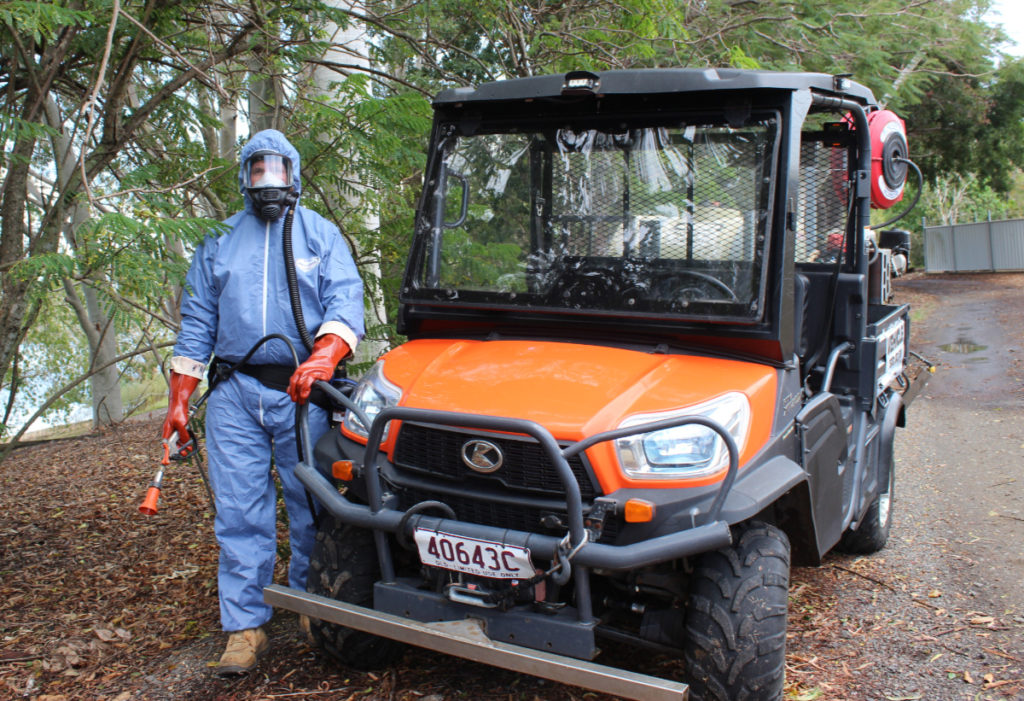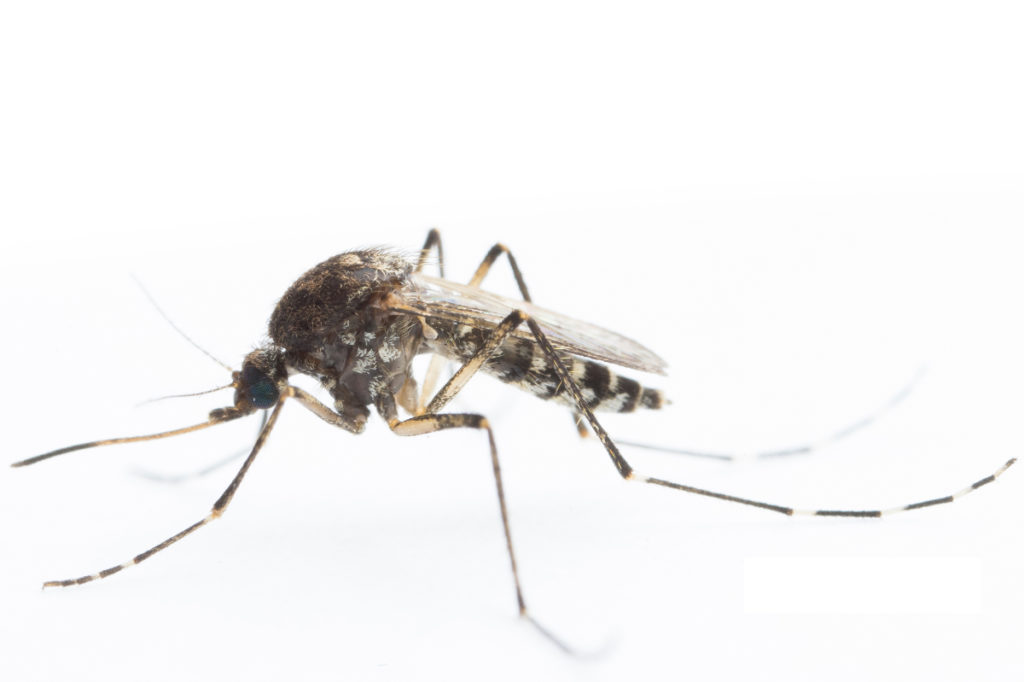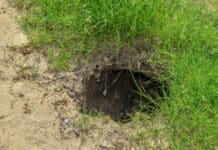
This isn’t a scene from a science fiction movie, it’s a Council employee wearing safety gear in hot weather before spraying mosquitoes.
The recent mosquito control program at Moore Park Beach involved Council staff starting work at 4am, donning heavy protective clothing in heat and trudging through wetlands.
For workplace health and safety reasons, staff wore full overalls, air-inducted masks and chemical-proof gloves.
They also started early to avoid impact on people and dogs, and children going to school.
Mosquito numbers typically spike after heavy rain or a king tide, which is what happened at Moore Park Beach.
Numbers stay high for a couple of weeks and normally ease. Mosquitoes are a fact of life in tidal areas and wetlands.
Council ranger Ian Routledge said starting at 4am before the mosquitoes became active helped, but by 7am it was hard and sweaty work.
Wearing full protective gear in hot weather was essential and the upside was relief from the aggressive biting of Vigilax mosquitoes.

Council’s environmental health employees strategically placed insecticide briquettes to control mosquito larvae.
This enabled rangers Ian Routledge and Andrew Beaumont to barrier spray a large area around the lagoon in three days.
“As we work through the areas we’re mindful of flowering plants, nests and any other environmental factors that may be affected,” Ian said.
“That’s why one of the team is designated as a spotter while the other sprays.”
Mosquito numbers at Moore Park Beach are expected to diminish soon if there isn’t significant rainfall.
Many people have commented on social media that mosquitoes in their area should also be sprayed.
Council’s pest control spokesman Cr John Learmonth said intervention came at a significant investment of time, money and personnel.
Trapping measures mosquito numbers
“Mosquitoes in our climate are simply a fact of life,” he said.
“We have salt marshes in our environment in coastal areas and our desire to have water in parks and recreational areas provides breeding sites for mosquitoes.
“Council regularly undertakes control measures in areas where perceived heavy infestation occurs.
“It’s not a matter of simply loading up a spray unit, decking out workers in personal protective apparel and spraying.
“Council’s control strategy is based on a scientific approach in response to numbers from trapping results which indicate the prevalence of mosquitoes.”
Cr Learmonth said Council traps mosquitoes at locations across the region including Bundaberg, Bargara, Burnett Heads, the Port of Bundaberg, Moore Park (two traps) and Woodgate.
“We also monitor Gin Gin and Childers specifically for the presence of Dengue Fever, which has previously been identified in these communities,” he said.
“The sampling process involves setting specialised traps baited with dry ice which emits carbon dioxide, similar to humans.
“Along with an attracting light, this draws mosquitoes into the trap where they are contained for evaluation.
“Council is restricted to spraying mosquitoes on Council-controlled areas as we are not able to enter private property for treatment programs without consent.
“Private landowners have a responsibility under the Public Health Act to ensure their land does not become a breeding ground for mosquitoes.”
Cr Learmonth said Council undertook an environmental evaluation before and during any spraying operation to minimise impacts on other insects and wildlife.
He said the recent intervention at Moore Park Beach was based on the number of complaints and sampling results.
“By being proactive around your own home you can reduce the incidence of mosquito activity,” he said.
“Ensure your doors and windows are adequately screened and this should minimise mosquitoes.”








Fraser Coast are starting to use microbats to control mosquito populations.
https://www.frasercoastchronicle.com.au/news/microbats-say-buzz-off-to-mosquitoes/3271676/
https://www.facebook.com/frasercoastmicrobats/
Please contact John Parsons for more information – I am sure this will be far less injurious to the environment 0481290998
Comments are closed.